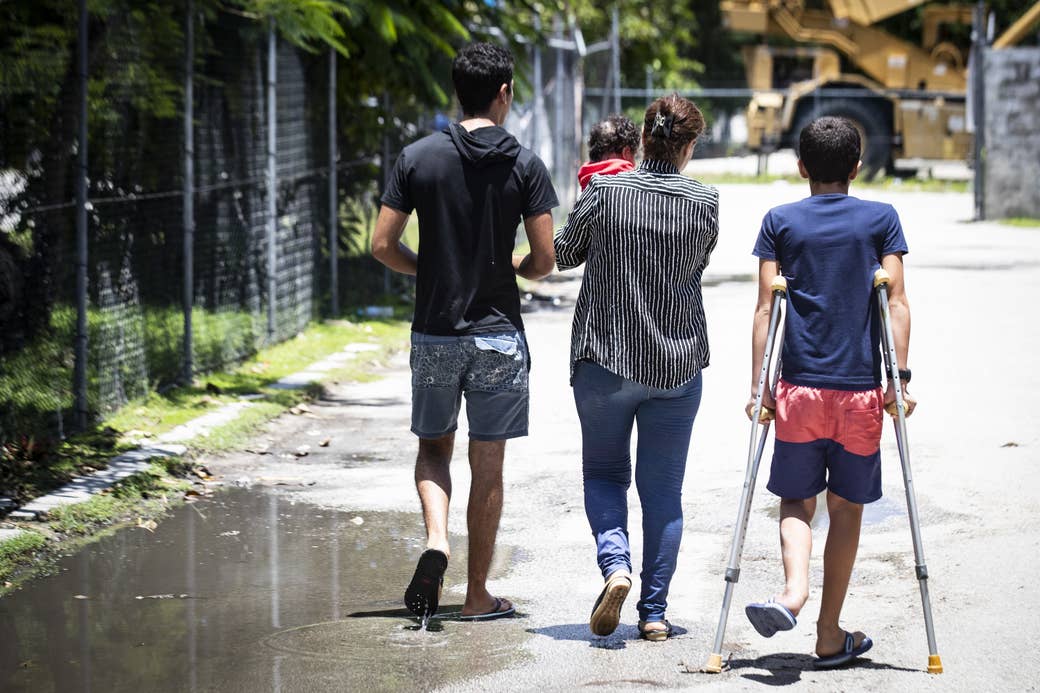
The Australian government had a problem.
From July 2013, it had banned refugees and asylum seekers who came to Australia by boat from ever settling in the country. Instead, the thousands of men, women and children who attempted the journey across from Indonesia were sent to live in detention centres on small islands in the Pacific.
But soon, the medical limitations of Nauru and Manus Island in Papua New Guinea became clear. Ill health was rife among detainees, and the local hospitals could not cater for patients with complex illnesses or who needed acute psychiatric care.
Simpler problems eluded treatment too. Ahmed (a pseudonym to protect his privacy), a 49-year-old refugee who has been held on Nauru for six years, told BuzzFeed News he endured a painful cavity in his tooth for seven months in 2018.
Medical staff on Nauru told him their dental equipment was broken. Untreated, the cavity ballooned into an infection on Ahmed’s face. At one point, he said, his gum was so puffy that he sterilised a needle himself and pierced it to clean the pus out.
Australia’s world-class public healthcare system is largely affordable and accessible to residents. Bringing sick people like Ahmed onshore would have been an obvious solution — but another hardline policy dictated only refugees in the throes of a “life-threatening medical emergency” could come to Australia for treatment.
So for more than a year, Australia’s immigration department fished around to find somewhere else with sophisticated healthcare to take the problem off their hands. After extensive planning and negotiation, an agreement was secretly signed with Taiwan in September 2017. Its existence was only confirmed eight months later.
Now, BuzzFeed News has obtained a copy of the agreement between the two countries, and details of the intense efforts leading to its execution.
The Department of Home Affairs has repeatedly refused freedom of information (FOI) requests for the text of the agreement, citing potential harm to Australia’s international relations. But using a copy of the deal filed in domestic court proceedings, plus other documents released under FOI, BuzzFeed News has been able to piece together the backstory for the first time.
The details lay bare the extraordinary and expensive lengths Australia has gone to in order to keep sick detainees away from its shores.
Ahmed flew to Taiwan to get a filling for his infected cavity in January 2019. He travelled in a batch of four and waited there under guard for four months, until the others in the group had finished their treatment, before they were sent back to Nauru. Australia footed the bill.
“They only take you to Australia when you actually have a near-death experience,” Ahmed said. “They have to see you die, practically, and everyone knows this.”
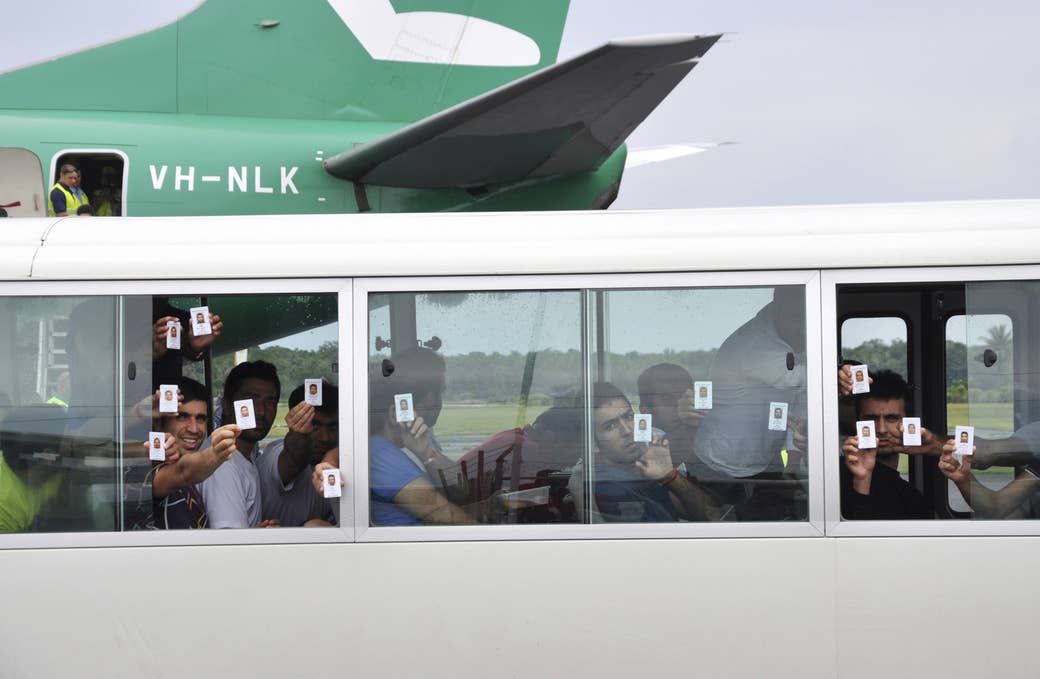
In 2016, the Australian Office in Taipei approached Taiwanese officials to scope out a deal. The Taiwanese were eager. An April 2017 trip to Taiwan to discuss the proposal and tour the Taipei Adventist Hospital “went well,” according to a brief issued to home affairs minister Peter Dutton the following month.
But the potential deal was so secretive that even members of the government weren’t aware of it.
Taiwanese officials briefly let slip about the negotiations during a visit to Taiwan in May 2017 by a delegation of MPs including conservative government members Stuart Robert, Dean Smith, Kevin Andrews, James Paterson, David Bushby and Kevin Hogan.
None of the MPs appeared to notice. “[The Department of Foreign Affairs and Trade] advised that it did not appear any of the parliamentarians specifically noted the reference, as there were no follow up questions and it was not mentioned again,” a brief to Dutton states.
By June 2017, the deal was broadly agreed upon, but the two parties had to figure out how it would actually work. So in late August, according to an internal memo, Australia organised a workshop to develop “clear and mutually beneficial arrangements” in Taiwan ahead of the agreement being signed.
It was led by senior department official Kingsley Woodford-Smith and aimed at identifying gaps in the process and highlighting the risks for Taiwan. Talking points suggest the Australians told the Taiwanese it needed a third country option for complex medical treatment because allowing refugees to come to Australia for health care “sets a precedent” that encourages people to “take extreme actions” such as self-harming to reach Australia.
Jonathan Pryke, director of the Pacific Islands Program at foreign policy think tank the Lowy Institute, told BuzzFeed News that Taiwan would have been “very eager” to sign on to the deal, to boost its legitimacy on the international stage.
Taiwan has only 15 formal diplomatic allies — who recognise it over the People’s Republic of China — including Nauru and three other Pacific Island states, but not Australia.
Taiwan is keen to make any institutional links with Australia it can, Pryke said. Signing a formal agreement with Australia helps give it legitimacy as an independent or sovereign territory, which it is “desperate for”.
He added that Australia had probably approached Taiwan for practical reasons. “Taiwan is not a signatory to the Refugee Convention, so people that are medevaced there for medical treatment can’t immediately claim asylum when they hit the ground,” he said.
Other states would consider Australia’s extreme offshore detention policy “pretty unpalatable”, Pryke said. “I’m not surprised that they didn’t have a big list of willing counterparts to engage with them on this one.”
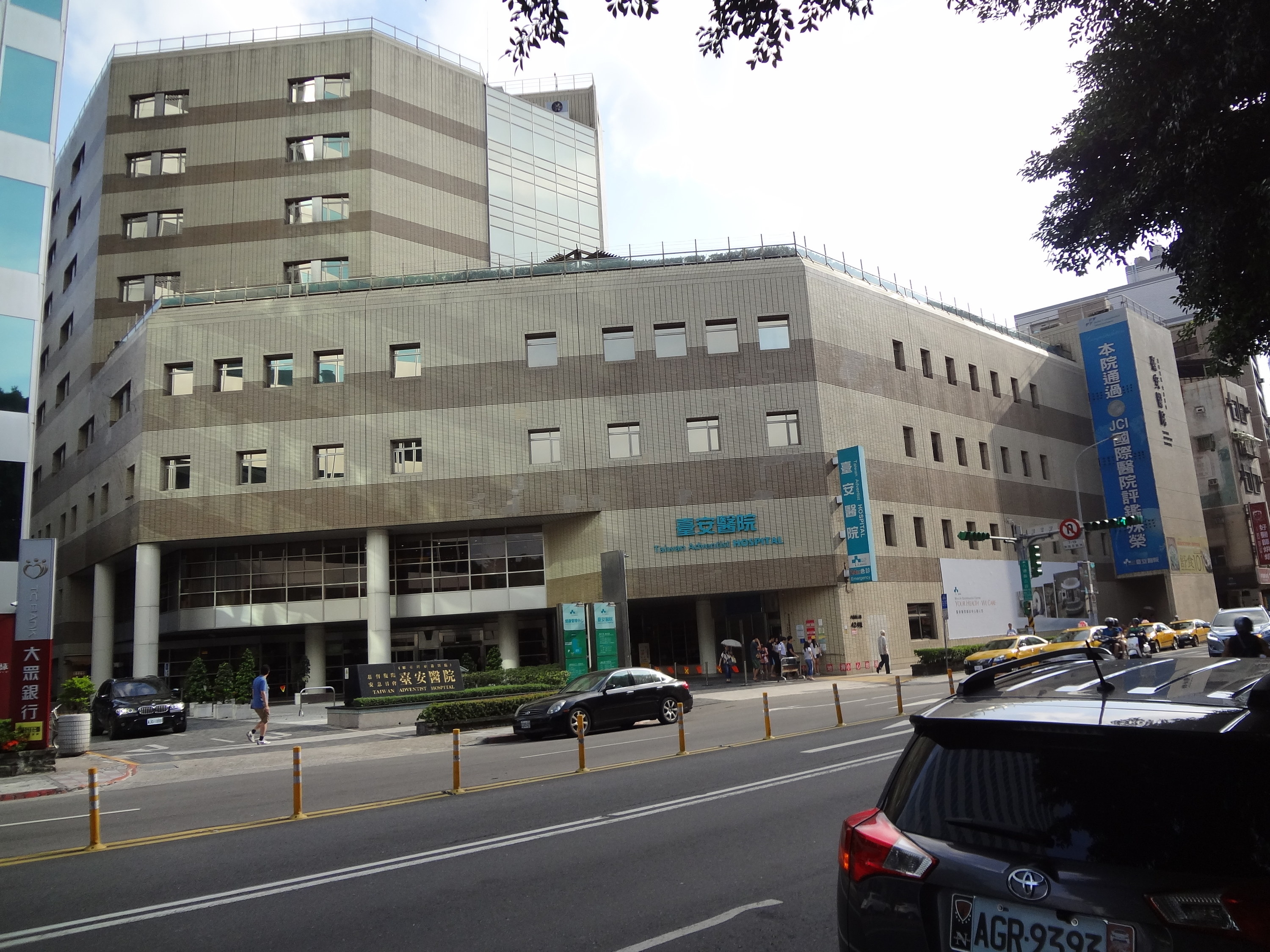
The deal was finally signed on Sept. 12, 2017. It said refugees and asylum seekers in Nauru and PNG could be transferred to Taiwan for medical treatment not available in those countries.
Australia agreed to cover the costs of transport to and from Taiwan, accommodation, living costs, visa fees, translation services and travel insurance for patients and their support persons, as well as the “jointly determined reasonable costs of the person’s medical treatment”, medication and outpatient services.
The department declined to tell BuzzFeed News how much has been spent on the Taiwan deal to date.
Transfers under the deal require the patient’s consent, and both countries agreed to treat individuals “with dignity and respect in accordance with human rights standards”.
The agreement also spells out that its terms and conditions must “remain confidential” unless they agree otherwise, or a domestic law requires them to be disclosed. A department spokesperson declined to answer BuzzFeed News questions about the need for secrecy.
But internal documents show the Australians were wary of criticism. Briefings to Dutton repeatedly noted as a “sensitivity” that the arrangement was “likely to attract media attention”. In November, officials pointed out a possible criticism: that the money should go to the Australian public health system instead. The government has publicly argued that bringing refugees to Australia for treatment would mean locals were “kicked off” hospital waiting lists.
Once the deal was signed, it would be months before the first refugees were transferred. The department had decided that there were “significant” diplomatic and operational risks in scheduling any transfers over Christmas, and strongly recommended against it.
Documents show the department amping up in December 2017 in preparation for the first transfer, holding weekly meetings and emphasising that a communications strategy had to be developed before seeking any refugee’s consent for transfer “as that may be a trigger for media interest”.
The first two transfers went ahead on Jan. 12, 2018. A press release from an activist group a month later was the first time the news of the deal was made public. It was confirmed in May 2018 when Taiwanese official Shyang-yun Cheng wrote to the Guardian to deny that patients had been returned to Nauru against their will.
The deal says that if a patient withdraws consent to be returned to Nauru, Taiwan will “provide for his or her removal under applicable domestic laws and in accordance with international human rights standards”.
By contrast, refugees and asylum seekers brought to Australia have stayed, usually protected by legal actions filed on arrival.
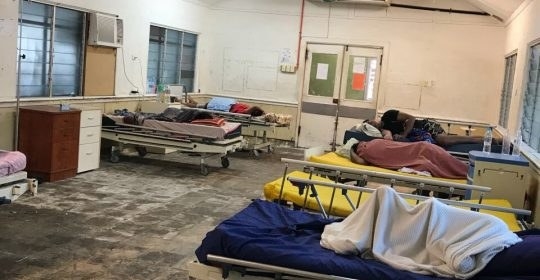
At the end of July 2019, there had been 33 transfers from Nauru to Taiwan, mostly for physical care. The same number of people had refused a transfer.
When Ahmed went to Taiwan, he was accompanied by his adult son, who needed four teeth extracted, as well as braces.
The Taiwanese orthodontist explained that the braces would need to stay on for two years, and that Ahmed’s son would need to see an orthodontist regularly to tighten and check them. She agreed to put that recommendation in a written report — but did not do so.
A dentist visits Nauru every two months for a week at a time. The only orthodontist to provide services to refugees on the island has done so via a tele-health service.
“Why did they send him to Taiwan for braces, knowing that braces need follow-up for two years?” Ahmed asked. “Any medical procedure needs follow-up. You can’t just do something and leave it and not look at it again.”
He described the Taiwan deal as a “show for media” under which people who had undergone surgeries and other procedures were sent back to Nauru with no ongoing follow-up treatment. He also said there was a “popular belief” that if you refuse transfer to Taiwan, you will eventually be taken to Australia for treatment.
It was for these reasons that people refused to go there, he said. “People saw that lot come back with incomplete work and decided not to go any more. In Taiwan, they never finish whatever you’re going for.”
Ahmed spoke to BuzzFeed News via an interpreter — something he said he did not have in Taiwan. “The onus is on you to find the words in English to communicate with health professionals.”
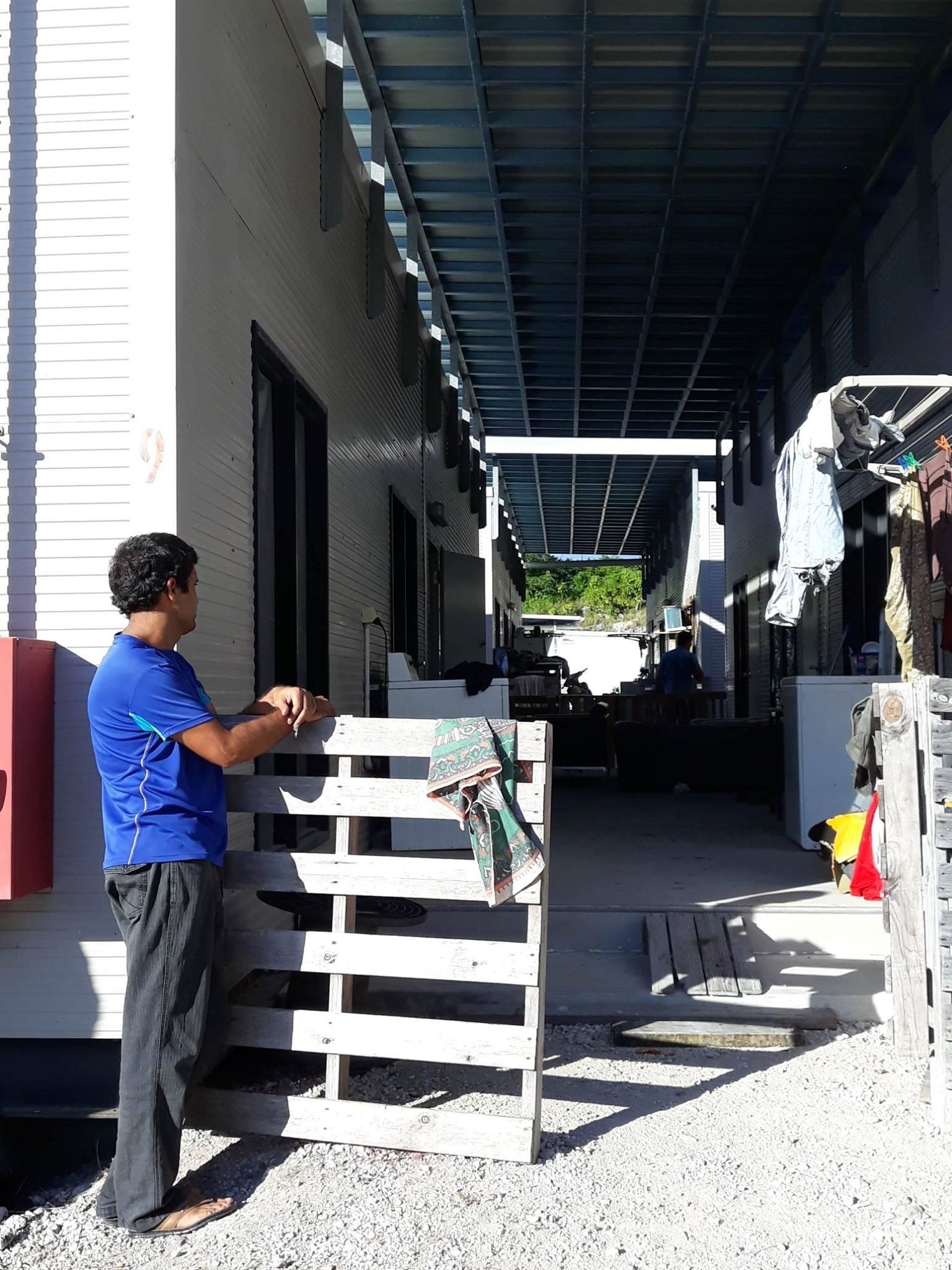
Similar issues were present in the 2018 court case through which BuzzFeed News obtained the text of the Taiwan deal. A woman held on Nauru who had undergone genital mutilation (FGM) sought a transfer to Australia to get an abortion. The government argued she should go to Taiwan, where there was no doctor who had performed a surgical abortion on an FGM victim and nobody who spoke the language.
The government’s lawyers said that because the woman’s vagina had been unstitched, she should have the operation in Taiwan instead, where she could not receive specialist care or the aid of an interpreter. “The vaginal opening is sufficient to perform the operation,” a lawyer told the court. The judge disagreed, and she was eventually flown to Australia.
Nisar Haji, a 32-year-old Indian national who fled Kashmir, told BuzzFeed News he had been sent to PNG four times over his kidney problems before being transferred to Taiwan in April last year, where he stayed for three months and underwent three operations. The government reportedly spent $300,000 on Haji’s transfer.
Now back on Nauru, Haji said that his kidney problems are ongoing and that he needs medical treatment elsewhere. He also has issues with his elbow, teeth, left eye and nose. Australia has offered him another transfer to Taiwan to treat his elbow and eye, he said, but he has refused unless he can receive treatment for all his health problems.
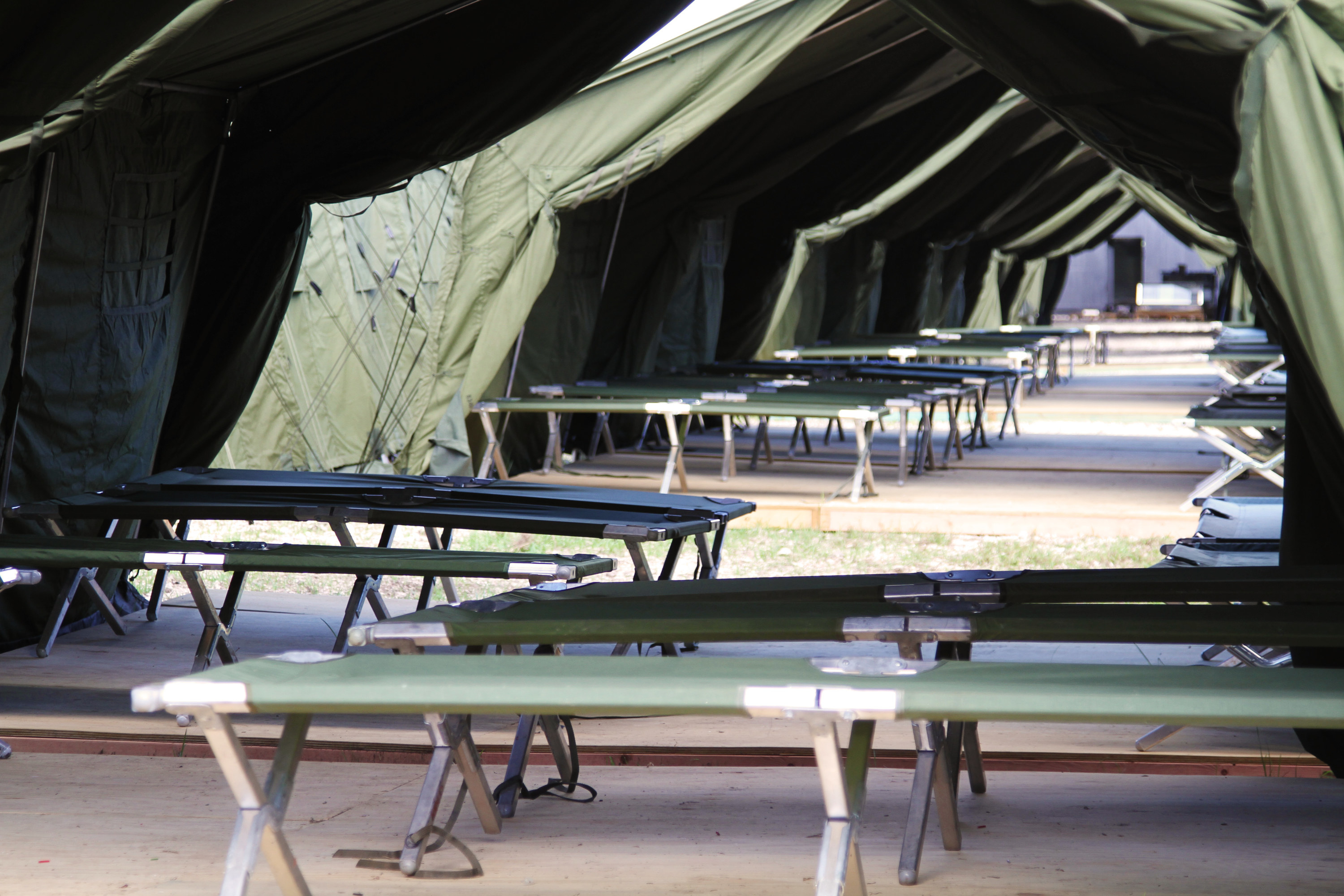
Although the deal also allows for transfers from Papua New Guinea, it has only been used for people on Nauru, which already had bilateral medical arrangements with Taiwan under which Taiwan provides technical assistance to the island’s hospital.
PNG has deep ties with China. The issue of China’s influence in the Pacific is increasingly a prominent one in Australia. Recently, Kiribati and the Solomon Islands switched allegiance from Taiwan to China in the same week.
Pryke said the Taiwan deal could annoy China because it further legitimises Taiwan. “But there’s a whole list of areas that China could be annoyed with Australia over at the moment, so I don’t think it’s high on their list,” he said.
The health of Australia’s offshore refugees and asylum seekers has erupted as a significant political issue in the last two years. A recent study of the health of people detained offshore by independent doctors found that 97% had a physical ailment and 91% had one or more psychiatric health problems.
The government’s hardline policy has been undermined by the “medevac” law, which gives doctors greater say over transfers. The government intends to repeal the law later this month.
The Taiwan deal as signed lasted for two years, so would have originally expired in September, and can be extended by an exchange of letters. A department spokesperson declined to say if this had occurred.
The Taipei Economic and Cultural Office in Australia declined to answer questions about the deal, referring BuzzFeed News to the Australian government.
The Australian home affairs department spokesperson told BuzzFeed News that the government had been clear that people held offshore would not be settled in Australia.
“Taiwan has a global reputation for high quality medical care and is consistently ranked as having some of the best hospitals and medical technology in the world,” the spokesperson said.
“Medical transfer is not a pathway to settlement in Australia.”
